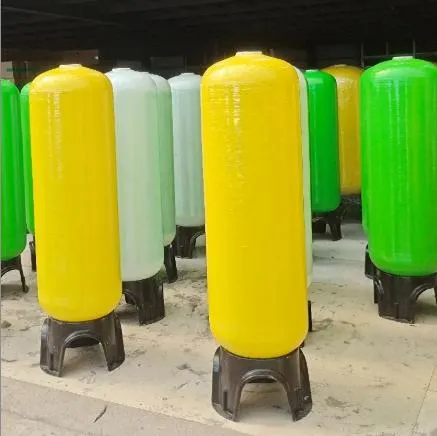carregando...
- Nº 9, Xingyuan South Street, Dongwaihuan Road, condado de Zaoqiang, Hengshui, Hebei, China
- admin@zjcomposites.com
- +86 15097380338
- Bem-vindo a visitar nosso site!
- Afrikaans
- Albanian
- Amharic
- Arabic
- Armenian
- Azerbaijani
- Basque
- Belarusian
- Bengali
- Bosnian
- Bulgarian
- Catalan
- Cebuano
- Corsican
- Croatian
- Czech
- Danish
- Dutch
- Inglês
- Esperanto
- Estonian
- Finnish
- French
- Frisian
- Galician
- Georgian
- German
- Greek
- Gujarati
- Haitian Creole
- hausa
- hawaiian
- Hebrew
- Hindi
- Miao
- Hungarian
- Icelandic
- igbo
- Indonesian
- irish
- Italian
- Japanese
- Javanese
- Kannada
- kazakh
- Khmer
- Rwandese
- Korean
- Kurdish
- Kyrgyz
- Lao
- Latin
- Latvian
- Lithuanian
- Luxembourgish
- Macedonian
- Malgashi
- Malay
- Malayalam
- Maltese
- Maori
- Marathi
- Mongolian
- Myanmar
- Nepali
- Norwegian
- Norwegian
- Occitan
- Pashto
- Persian
- Polish
- Portuguese
- Punjabi
- Romanian
- Russian
- Samoan
- Scottish Gaelic
- Serbian
- Sesotho
- Shona
- Sindhi
- Sinhala
- Slovak
- Slovenian
- Somali
- Spanish
- Sundanese
- Swahili
- Swedish
- Tagalog
- Tajik
- Tamil
- Tatar
- Telugu
- Thai
- Turkish
- Turkmen
- Ukrainian
- Urdu
- Uighur
- Uzbek
- Vietnamese
- Welsh
- Bantu
- Yiddish
- Yoruba
- Zulu
A Cost-Effective and Durable Solution
FRP (Fiberglass Reinforced Plastic) pressure vessels are quickly gaining popularity across a wide range of industries due to their unique combination of strength, durability, and lightweight properties. As industries seek more sustainable, cost-effective alternatives to traditional metal pressure vessels, FRP pressure vessels, FRP pressure tanks, and their prices continue to be key considerations. This article will explore the benefits of FRP pressure vessels, FRP pressure tanks, and discuss factors that influence FRP pressure vessel price.

FRP Pressure Vessels: The Future of Industrial Containment
FRP pressure vessels offer a robust solution for industries that require the containment of liquids, gases, and other pressurized substances. Made from a composite material of fiberglass and resin, these vessels are corrosion-resistant, lightweight, and incredibly strong. Unlike traditional metal pressure vessels, FRP pressure vessels can withstand extreme temperatures and harsh chemicals, making them perfect for use in industries such as chemical processing, water treatment, and oil and gas. Their durability ensures long service life, reducing maintenance and replacement costs over time.
FRP Pressure Tanks: Versatile and Reliable
One of the most popular applications of FRP pressure tanks is in water filtration systems, where they are used to house water treatment media such as sand, carbon, or resin. FRP pressure tanks are specifically designed to handle high-pressure situations while maintaining their integrity in corrosive environments. Whether for residential, commercial, or industrial applications, FRP pressure tanks provide a reliable, low-maintenance solution. Their lightweight nature also makes them easier to transport and install, further reducing labor and transportation costs compared to traditional metal tanks.
Understanding the Cost of FRP Pressure Vessels: What Affects the Price?
When considering purchasing FRP pressure vessels, it is important to understand the factors that influence FRP pressure vessel price. Several elements contribute to the cost, including the size of the vessel, the materials used in its construction, and the complexity of the design. Additionally, prices can vary depending on the manufacturer, customization requirements, and the intended application of the vessel. FRP pressure vessel price is often more competitive than that of metal vessels, offering substantial cost savings in both installation and long-term maintenance.
Why Choose FRP Pressure Vessels Over Traditional Materials?
Choosing FRP pressure vessels over metal alternatives offers a range of benefits that make them ideal for demanding applications. They are resistant to corrosion, which ensures that they maintain their integrity even when exposed to harsh chemicals or outdoor environments. FRP pressure vessels also have a lower weight, which reduces transportation and installation costs. Furthermore, they are easy to maintain, and their non-reactive properties help prevent contamination in sensitive environments, such as water treatment plants. Overall, FRP pressure vessels provide an effective, cost-efficient solution for various industries.
What You Need to Know About FRP Pressure Vessel Price
When considering an investment in FRP pressure vessels, it’s important to shop around and compare FRP pressure vessel price from different suppliers. While FRP pressure vessel price can vary, the overall cost of ownership is often lower due to their durability and minimal maintenance needs. Long-term savings from reduced maintenance, fewer replacements, and better operational efficiency make FRP pressure vessels a smart choice for many industries. Be sure to consider the overall value, including warranties and after-sales support, when evaluating the cost of FRP pressure vessels.
In conclusion, FRP pressure vessels, including FRP pressure tanks, offer significant advantages over traditional pressure containment solutions. Their cost-effective nature, combined with strength, lightweight properties, and resistance to corrosion, make them ideal for a variety of industrial applications. Understanding the factors that influence FRP pressure vessel price can help you make an informed decision for your business needs, ensuring long-term performance and savings.
-
Revolutionizing Industrial Safety with ZJ Composites' Mini Mesh GratingNotíciasNov.14,2025
-
Premium FRP Profiles and FRP Grating Revolution for Global WholesalersNotíciasNov.14,2025
-
Ultimate Strength with ZJ Composites FRP Profiles for Wholesale SuccessNotíciasNov.14,2025
-
ZJ Composites Covered Grating – The Durable Flooring Solution for Smarter Industrial SpacesNotíciasNov.14,2025
-
Mini Mesh Grating Enhancing Strength and Style in Every ProjectNotíciasNov.14,2025
-
FRP Pressure Vessels by ZJ CompositesNotíciasNov.14,2025
-
Transforming Industrial Spaces with Advanced Frp GratingNotíciasNov.11,2025
